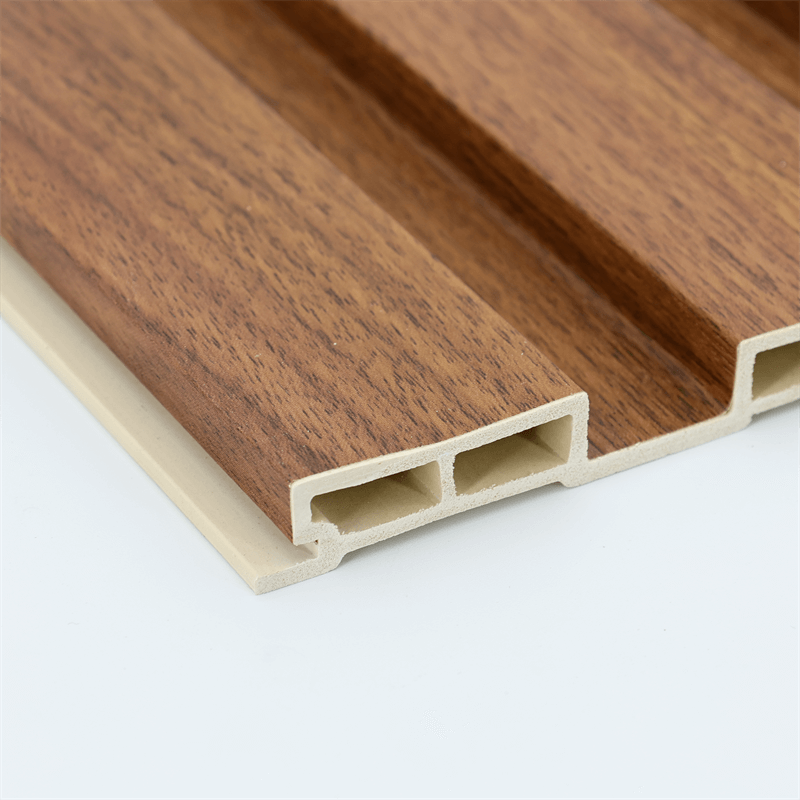Choosing the right wall cladding material is a crucial decision when it comes to interior design.
The cladding not only affects the aesthetics of a space but also determines its durability, maintenance requirements, and overall performance.
Two popular options in the market are WPC (Wood-Plastic Composite) wall panels and traditional wall cladding materials.
In this essay, we will compare WPC wall panels to traditional wall cladding, exploring their characteristics, advantages, disadvantages, and overall suitability for different applications.
I. Composition and Material Properties
WPC wall panels are engineered using a blend of wood fibers and recycled polymers. This composite composition gives them a unique set of characteristics.
On the other hand, traditional wall cladding materials can vary widely, including options like natural wood, stone, brick, vinyl, or cement-based products.
WPC panels offer the advantage of being moisture-resistant, rot-resistant, and termite-resistant due to the inclusion of polymers.
They are also lightweight, making them easier to install. However, traditional cladding materials like natural wood offer a natural beauty and texture that may be preferred by some.
Stone cladding provides a timeless elegance and durability, while brick cladding offers a traditional and rustic aesthetic.
II. Durability and Maintenance
Durability and maintenance requirements are crucial factors to consider when comparing WPC wall panels to traditional cladding materials.
WPC panels have excellent durability, resisting rot, decay, and insect damage. They are also resistant to moisture, making them suitable for high-moisture areas like bathrooms and kitchens.
Furthermore, WPC panels are low maintenance, requiring minimal upkeep and no painting or staining.
In contrast, traditional cladding materials may have varying levels of durability and maintenance requirements.
Natural wood cladding, for example, requires regular staining or sealing to maintain its appearance and protect it from the elements.
Stone cladding may require occasional sealing, while brick cladding may need repointing or cleaning over time.
III. Aesthetics and Design Options
Aesthetics play a significant role in interior design, and both WPC panels and traditional cladding materials offer a range of design options.
WPC panels can mimic the appearance of natural wood, stone, or other materials, providing versatility in achieving different design styles.
They are available in various colors, finishes, and textures, allowing for customization to suit individual preferences.
Traditional cladding materials like natural wood, stone, or brick offer a distinct and authentic appearance.
They bring a natural warmth, texture, and character to a space, which may be preferred in certain design themes.
However, the design options may be more limited compared to WPC panels, and the availability of certain materials can vary.
IV. Environmental Impact and Sustainability
Considering the environmental impact and sustainability of wall cladding materials is essential for eco-conscious homeowners.
WPC wall panels offer a more sustainable option compared to traditional cladding materials in many aspects.
They utilize recycled materials, such as wood fibers and polymers, reducing the demand for virgin resources.
WPC panels also have a lower carbon footprint compared to materials like natural wood or stone, as their manufacturing process requires less energy and generates fewer greenhouse gas emissions.
Additionally, the longevity and durability of WPC panels contribute to sustainability by reducing the need for frequent replacements and minimizing waste.
Traditional cladding materials, on the other hand, may have a higher environmental impact due to the extraction and processing of raw materials.
The sustainability of these materials depends on factors such as sourcing practices, manufacturing processes, and disposal methods.
Choosing between WPC wall panels and traditional wall cladding materials depends on various factors, including personal preferences, project requirements, and environmental considerations.
WPC panels offer excellent durability, low maintenance requirements, and a wide range of design options.
They are moisture-resistant, rot-resistant, and lightweight, making them suitable for different applications.
Moreover, they provide sustainability benefits through their use of recycled materials and lower carbon footprint.
Traditional cladding materials like natural wood, stone, or brick have their own unique charm and aesthetic appeal.
They offer a natural beauty and texture that can enhance the overall ambiance of a space. However, they may require more maintenance and have higher environmental impacts compared to WPC panels.
Ultimately, the choice between WPC wall panels and traditional wall cladding materials depends on individual preferences, project requirements, and the desired balance between durability, aesthetics, maintenance, and sustainability.
Consider these factors carefully to make an informed decision that best suits your specific needs and design vision.

In conclusion, the decision between WPC wall panels and traditional wall cladding materials depends on a variety of factors, including durability, maintenance requirements, aesthetics, and environmental impact.
WPC wall panels offer excellent durability, resistance to moisture and insects, and low maintenance requirements. They are lightweight, easy to install, and come in a wide range of design options.
Additionally, their use of recycled materials and lower carbon footprint make them a more sustainable choice.
On the other hand, traditional wall cladding materials like natural wood, stone, or brick have a distinct aesthetic appeal and bring a natural warmth and texture to a space.
However, they may require more maintenance and have higher environmental impacts.
When making a decision, it is important to consider your specific needs, preferences, and project requirements.
Evaluate the durability, maintenance, and aesthetic aspects of each option, and also take into account the sustainability factors if eco-friendliness is a priority.
By carefully considering these factors, you can determine whether WPC wall panels or traditional wall cladding materials are the better choice for your project.
Remember to weigh the pros and cons and make an informed decision that aligns with your design vision, budget, and long-term goals.
In the end, both WPC wall panels and traditional cladding materials have their own advantages and considerations.
The key is to find the balance that best suits your needs and preferences, creating a beautiful and durable wall cladding solution that enhances the overall aesthetic and functionality of your space.


